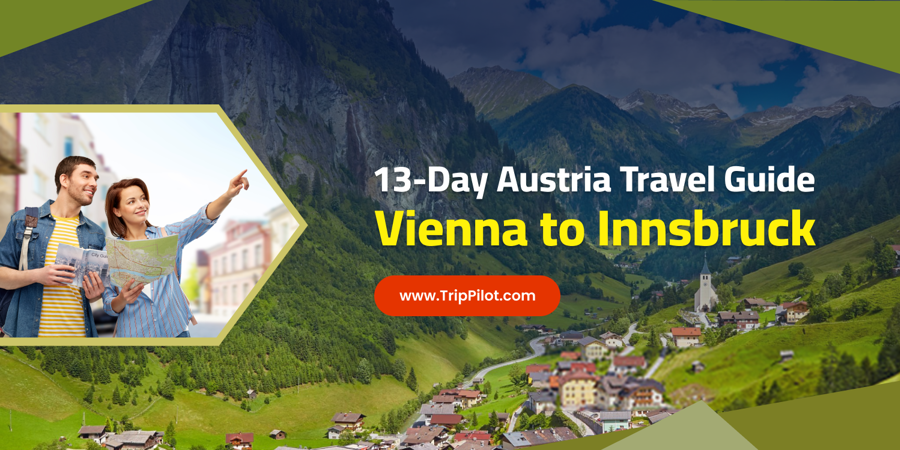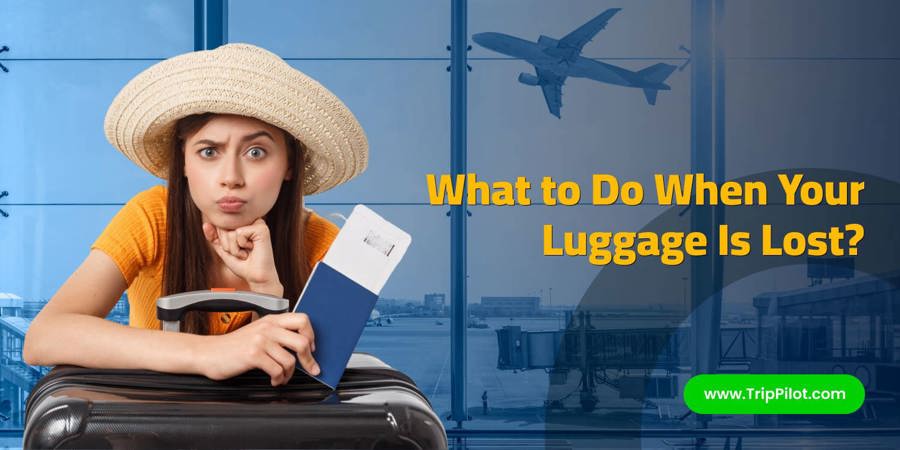Picture yourself sipping world-class coffee in a grand Viennese café, then just days later breathing in crisp Alpine air while gazing at snow-capped peaks in Innsbruck. Austria offers this magical transformation from imperial elegance to mountain majesty, and with proper planning, you can experience both worlds seamlessly.
The challenge many travelers face is maximizing their time across Austria's diverse regions while staying within budget and avoiding tourist traps. That's where Custom Travel Planning becomes essential – and why an AI Travel Planner like TripPilot can transform your Austrian adventure from overwhelming to extraordinary, creating personalized day-by-day plans that adapt to your interests, budget, and travel style.
Key Takeaways
- Experience Austria's cultural triangle – Vienna, Salzburg, and Innsbruck's Alpine adventure
- Save up to 40% on accommodation and transport with strategic timing using a Free Vacation Trip Planner
- Discover hidden gems beyond tourist hotspots, including Lake Wörthersee and traditional mountain villages
- Navigate Austria's efficient public transport system with insider tips for seamless city-to-city transfers
- Access exclusive cultural experiences from Schönbrunn Palace to Hohensalzburg Fortress
- Build a Custom Trip optimized for your budget with TripPilot's intelligent recommendations
Vienna: Imperial Splendor and Modern Sophistication (Days 1-4)
# Schönbrunn Palace and Historic Center
Begin your Austria tourism journey in Vienna's UNESCO World Heritage historic center, where centuries of imperial history unfold around every baroque corner. Schönbrunn Palace, Austria's most significant cultural treasure, costs €27-34 for comprehensive access to the former Habsburg summer residence. The palace's 1,441 rooms tell stories of 640 years of royal rule, with highlights including Marie Antoinette's childhood chambers and the Hall of Mirrors where Mozart performed for Empress Maria Theresa.
Vienna's famous coffee houses represent more than cafes – they're cultural institutions where intellectuals like Freud and Trotsky once gathered. Café Central maintains its historic atmosphere with marble tables and newspapers from around the world, offering authentic Viennese experiences that tourist guides often miss.
A Personal Travel Planner excels at timing your Vienna experience perfectly, suggesting optimal visiting hours for major attractions to avoid crowds and identifying authentic experiences based on your preferences rather than generic recommendations.
# Belvedere Palace and Art Museums
Belvedere Palace houses the world's largest collection of Gustav Klimt paintings, including the famous "The Kiss," making it essential for art enthusiasts. The baroque palace complex demonstrates Austrian architectural mastery while showcasing centuries of artistic development. Entry costs €16-22 depending on exhibitions, with combination tickets offering better value for museum enthusiasts.
Vienna's museum landscape extends beyond famous institutions. The Leopold Museum features Egon Schiele's expressionist works, while contemporary galleries showcase emerging Austrian artists. The Naschmarkt, operating since the 18th century, provides authentic local experiences with traditional delicacies and weekend flea markets.
When you create a personal travel itinerary online with TripPilot, the system identifies cost-saving combination tickets and suggests optimal museum routing based on your artistic interests and available time.
3. Wachau Valley Day Trip
The Wachau Valley represents Austria's wine-making tradition at its finest, with terraced vineyards cascading down to the Danube River. Dürnstein offers wine tastings at family-run Heurigen where local vintners serve their latest vintages alongside traditional Austrian cuisine. Melk Abbey, one of Europe's most magnificent baroque monasteries, features a library with 100,000 volumes and manuscripts dating back to the 9th century.
Train connections from Vienna reach Melk in 90 minutes, while river cruises offer scenic alternatives. An AI Travel Planner optimizes transportation choices based on weather, budget, and time constraints, ensuring you experience the valley's beauty without logistical complications.
Salzburg: Mozart's Birthplace (Days 5-6)
# Historic Old Town and Mozart Heritage
Train tickets from Vienna to Salzburg (3 hours) cost around €40 with advance booking, making this one of Europe's most scenic rail journeys. Salzburg's Old Town compresses extraordinary beauty into one square kilometer, maintaining baroque elegance while embracing modern cultural innovations.
Mozart's Birthplace museum at No. 9 Getreidegasse displays original manuscripts, childhood instruments, and personal artifacts that humanize the musical genius. Mirabell Palace provides the perfect introduction to baroque landscape design, featuring the Marble Hall where Mozart performed chamber music and gardens offering perspectives of Salzburg's fortress and surrounding Alps.
Hohensalzburg Fortress, dominating the city skyline, represents one of Europe's largest medieval castles. The fortress offers panoramic views across the Salzach River and interactive exhibits about medieval life and regional history.
# Sound of Music and Cultural Experiences
Despite locals' occasional skepticism, Sound of Music locations offer legitimate insights into regional natural beauty and architectural heritage. The von Trapp family story intersects with significant 20th-century Austrian history, making themed tours more educational than many visitors expect.
Hellbrunn Palace features unique trick fountains (Wasserspiele) that surprise visitors with unexpected water jets activated by hidden mechanisms. The mechanical theater, powered entirely by water, performs automated scenes that have entertained visitors for over 400 years.
Graz and Styria: Austria's Hidden Gem (Day 7)
# Kunsthaus Graz and Cultural Innovation
Graz, Austria's second-largest city, offers a different perspective on Austrian culture, blending historic preservation with avant-garde architecture. Kunsthaus Graz, nicknamed "the friendly alien" for its biomorphic design, houses contemporary art exhibitions that challenge traditional Austrian cultural perceptions. The building's distinctive blue exterior and innovative lighting system create a landmark that represents Austria's modern artistic evolution.
Schloss Eggenberg, a UNESCO World Heritage site, demonstrates Renaissance palace architecture with 365 rooms, 52 staircases, and 24 state rooms representing the calendar year. The palace's Planetary Room features baroque ceiling frescoes depicting mythological scenes, while the archaeological museum displays artifacts from Styrian history.
Graz's compact city center allows walking exploration of hidden courtyards, independent bookshops, and student cafes that reflect the city's university atmosphere. Local Styrian cuisine features pumpkin seed oil, a regional specialty that adds distinctive nutty flavors to traditional Austrian dishes.
Klagenfurt and Carinthia: Alpine Lakes (Day 8)
# Lake Wörthersee and Alpine Recreation
Klagenfurt serves as the gateway to Carinthia's lake district, where Lake Wörthersee offers Austria's warmest Alpine swimming with summer temperatures reaching 25°C. The lake's 17-kilometer length provides opportunities for sailing, swimming, cycling, and lakeside hiking with mountain backdrops that rival Switzerland's famous scenery.
The Minimundus miniature park features scaled replicas of world landmarks, including detailed models of famous buildings constructed with original materials. While tourist-oriented, the park demonstrates Austrian precision and craftsmanship while entertaining families with children.
Traditional lakeside restaurants serve fresh fish specialties, including Reinanke (whitefish) and Karpfen (carp) prepared according to regional recipes passed down through generations. These culinary experiences connect visitors with Carinthian food traditions in their natural lake environment.
Innsbruck and Tyrolean Alps (Days 9-13)
# Alpine Capital and Olympic Legacy
Innsbruck's dramatic setting beneath towering peaks makes it one of Europe's most spectacular capital cities. The Golden Roof (Goldenes Dachl), built in 1500 with 2,657 fire-gilded copper tiles, represents the city's wealth from Alpine trade routes. The Imperial Palace (Hofburg) showcases Habsburg court life with Maria Theresa's rococo apartments and the Giant Hall used for state ceremonies.
The Nordkette Cable Car reaches 2,256 meters in 20 minutes, offering year-round access to Alpine hiking trails and panoramic views extending across three countries. Innsbruck's Olympic legacy includes world-class sports facilities that remain active for both professional training and public recreation.
# Alps Adventures and Mountain Culture
The surrounding Tyrolean Alps provide endless opportunities for Alps Adventures, from gentle valley walks to challenging mountain climbs. The Stubai Glacier offers reliable snow conditions from October through May, while summer hiking reveals pristine Alpine lakes and traditional mountain huts serving hearty regional cuisine.
Zillertal Valley maintains an authentic Alpine culture where traditional farming communities preserve customs that tourist areas often lose to commercialization. The historic steam train, operating since 1902, provides transportation that doubles as a cultural experience with wooden carriages and brass fittings.
Local schnapps distilleries welcome visitors for tastings of fruit brandies made from valley-grown ingredients, including pear, apple, and apricot varieties that reflect terroir and traditional production methods passed down through generations.
Frequently Asked Questions
What's the best time to visit Austria for this itinerary?
Late spring (May-June) and early autumn (September-October) offer ideal conditions for comprehensive Austrian exploration. The weather remains pleasant for both city sightseeing and mountain activities, while accommodation prices stay reasonable outside the peak summer season.
How do I create the perfect Austrian itinerary?
Build a Custom Trip using tools like TripPilot that consider your interests, budget, and travel style. The platform's AI Travel Planner analyzes thousands of traveler preferences to suggest optimal routing, timing, and experiences tailored to your specific needs.
Is public transportation sufficient for this itinerary?
Austria's excellent rail network connects all major destinations efficiently. Train travel between Vienna, Salzburg, Graz, Klagenfurt, and Innsbruck offers scenic routes, comfortable seating, and reliable schedules that eliminate driving stress in mountain areas.
What should I budget for 13 days in Austria?
Budget travelers can expect €80-€120 daily, including accommodation, meals, and attractions, while mid-range travelers should budget €150-€250 daily for comfortable experiences. A Free Vacation Trip Planner helps optimize costs by identifying combination tickets and off-peak pricing opportunities.
Conclusion
Austria rewards travelers who embrace both its imperial elegance and Alpine authenticity, offering experiences from world-class cultural institutions to pristine mountain wilderness. This 13-day Austria itinerary provides the framework for understanding Austria's complexity while allowing personal discovery and spontaneous exploration.
Success lies in balancing planned experiences with flexibility for unexpected discoveries, whether lingering longer in captivating museums, accepting local celebration invitations, or choosing unplanned hiking trails. Austria's compact size and excellent infrastructure support both careful planning and spontaneous adventure.
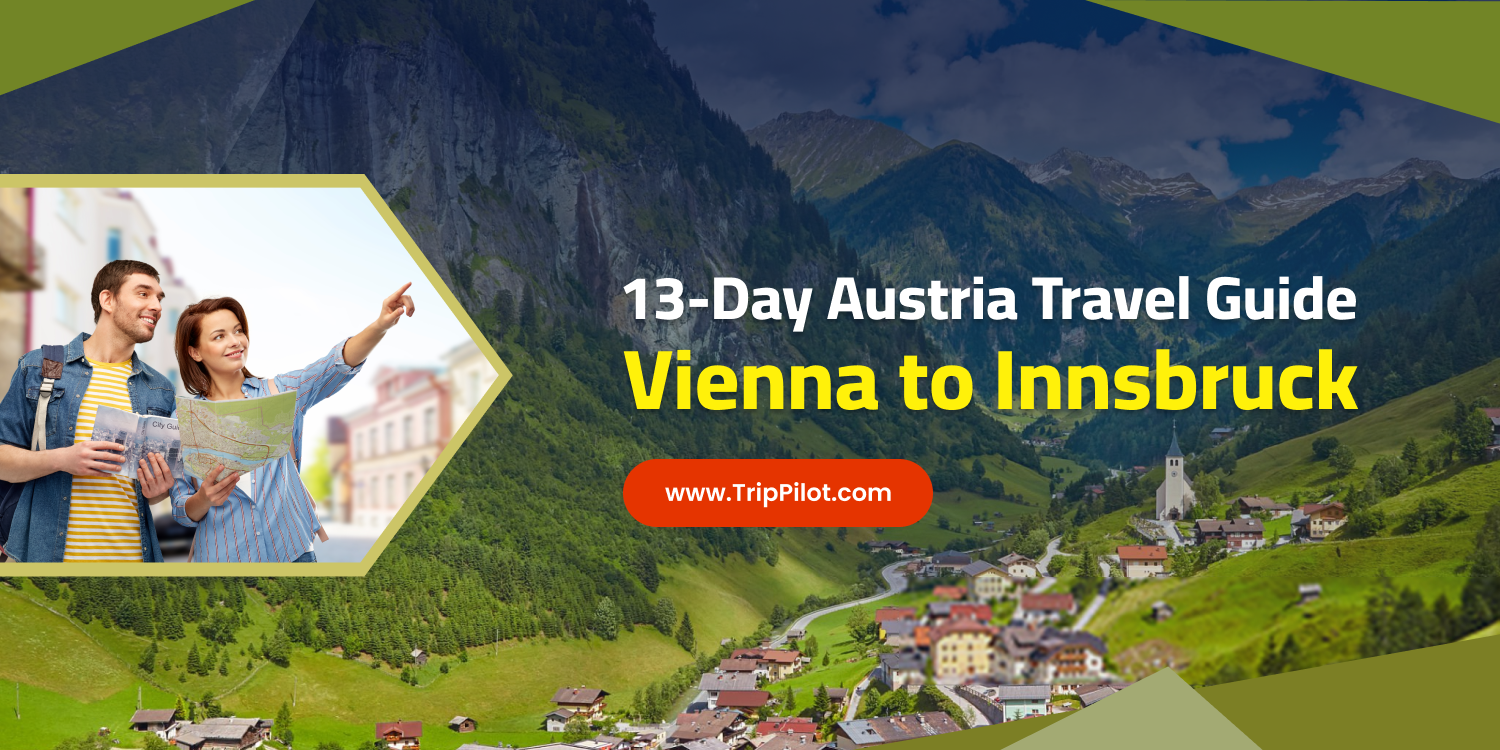

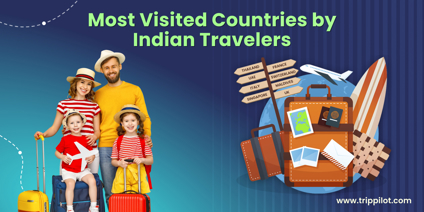
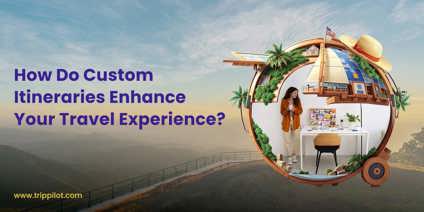


_900x450.png)
